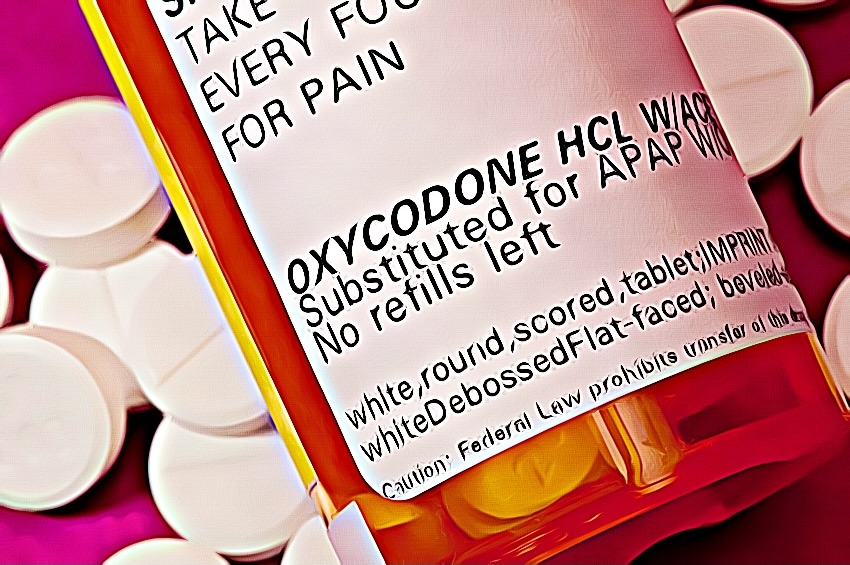The opioid epidemic has continued to rage all over the world, especially in the United States. Thousands of people have developed a severe dependence on opioids, suffering from overdoses and requiring opioid addiction treatment. While most people associate heroin and fentanyl with opioids, other opioids are available legally by prescription, such as hydrocodone, codeine, and morphine. One prominent drug that many have abused is oxycodone, which we’ll be discussing in this article.
Oxycodone is found in OxyContin and Percocet, one of the most widely abused prescription drugs in the country. Here’s what you need to know about oxycodone and how it affects your body:
How Long Does Oxycodone Stay in Your System?
Oxycodone’s effects wear off after a few hours, although it will stay in your system for a much longer period. Sometimes, oxycodone traces remain in your body months after taking it, which is important to consider if you are worried about it showing up on a drug test.
To find out how long it will last in your body, you’ll need to measure its half-life, which is the time it takes for the body to eliminate half the drug from itself. Immediate-release forms of oxycodone have an average half-life of 3.2 hours. That means it takes that amount of time for the average person to process and clear half of the oxycodone dose from their system. On the other hand, controlled or extended-release forms have a longer half-life of 4.5 to 5.6 hours.
It will take multiple half-lives to remove the drug from your system altogether. Everyone metabolizes medications at different speeds, so the half-life will change from person to person. However, oxycodone usually clears from the blood within 24 hours, although traces remain in urine, saliva, or hair for a longer period.
It can be detected in the following period after taking the drug:
- Saliva for one to four days
- Urine for three to four days
- Hair for up to 90 days
The pain relief will subside long before the substance itself clears from your body. For this reason, doctors prescribe taking one tablet every four to six hours while you’re feeling the pain. However, controlled or extended-release formulations last much longer, which is why doctors prescribe patients to take them at 12-hour intervals.
What is Oxycodone, and What is It Used For?
Oxycodone is prescribed to relieve moderate to severe pain in adults who can’t seek relief from other pain medications. Doctors usually prescribe oxycodone after an injury, trauma, or major surgery to manage pain symptoms and help patients feel more comfortable. It is sometimes used to treat other kinds of severe pain, like cancer.
The drug is available in both immediate-release and controlled or extended-release forms. Its immediate-release forms include Oxaydo, Roxycodone, Roxybond, and Oxy IR. The controlled or extended-release versions are OxyContin CR (controlled-release) and Xtampza ER (extended-release). Some combination medications also include oxycodone, such as oxycodone combined with acetaminophen (Percocet and Xartemis XR), combined with aspirin (generic), and ibuprofen (generic).
Oxycodone comes from the poppy plant, binding to the mu-opioid receptor in the brain and obstructing it from feeling pain. Since it activates the brain’s pleasure centers, it has a very high potential for abuse and addiction. That is why the drug is classified as a federal controlled substance or C-II.
If a medical provider has recently prescribed oxycodone to you, you may be wondering about how it affects your body, how long it lasts, and if it shows up on a drug test. It is also crucial to know what you must do if you choose to stop taking oxycodone. Abruptly discontinuing the prescription will result in withdrawal symptoms, which can take a toll on your physical and mental health.
What are the Factors Affecting Oxycodone’s Effects?
There are a few things that influence how long the body takes to eliminate oxycodone. One of these is age, as blood concentrations of oxycodone have been observed to be up to 15 percent higher in those over 65 years old than younger adults. Sex is also a factor, with oxycodone concentration being up to 25 percent higher in healthy females than in males, according to the package insert for OxyContin.
Liver and kidney function have been observed to impact oxycodone’s half-life. Those with liver dysfunction had a half-life of 2.3 hours longer, meaning that the body takes longer to eliminate the substance from itself. Those with kidney problems also have an increased half-life by one hour.

Your body eliminates oxycodone through a pathway known as cytochrome P450 3A or CYP3A. Drugs that inhibit this make it harder for your body to process and break down oxycodone, so taking this along with certain medications may lead to severe problems. These medications include protease inhibitors, azole antifungal agents like ketoconazole, and macrolide antibiotics.
What are the Side Effects of Oxycodone?
Like other medications, oxycodone may result in side effects. These include a dry mouth, drowsiness, stomach pain, flushing, a headache, and mood changes. If you experience these symptoms severe or persist, be sure to inform your doctor right away.
The drug can also lead to severe side effects. If you experience any of these or the symptoms labeled in the drug’s important warning section, contact your doctor immediately or seek emergency help. These symptoms include the following:
- Irregular menstruation
- Changes in heartbeat
- Chest pain
- Nausea
- Vomiting
- Loss of appetite
- Weakness
- Agitation
- Hallucinations
- Hives
- Itching
- Hoarseness
- Swelling of the face, throat, tongue, lips, eyes, hands, ankles, feet, or lower legs
- Seizures
- Extreme drowsiness
- Difficulty breathing or swallowing
- Lightheadedness when shifting or changing positions
It’s important to note that oxycodone may also result in other side effects. If you notice anything unusual while taking the medication, call your doctor immediately.
How Long Does Oxycodone Last?
Oxycodone is meant to provide pain relief, so most people experience these intended effects within an hour of taking it. They’ll also feel other symptoms, such as feelings of euphoria, sleepiness, and relaxation. They may also encounter some side effects, as outlined above. The immediate-release form lasts for four to six hours, while the extended-release form lasts for 12 hours.
Those who take the drug nasally or intravenously observe a “high” immediately after taking it. However, when individuals use oxycodone for a long time and at a higher dosage than what was prescribed, or without a doctor’s supervision, they are more likely to get addicted to it. This manifests when someone begins to crave oxycodone to feel normal, causing them to take more than the prescribed amount and putting them at risk for severe side effects.
Taking too much oxycodone can also result in fatalities. Overdosing can stop a person’s heart from beating or their lungs from breathing. It can also put them in a coma, so it is crucial to take only the recommended amount.
Conclusion
Oxycodone is convenient for relieving pain due to trauma, injury, or surgery, allowing a patient to feel comfortable after grappling with sharp aches and soreness for hours. However, it has a high abuse potential due to its effects, so it is crucial to work closely with a doctor when taking it. By following our guide, you’ll understand how oxycodone works and what you should do to lower your risk of addiction to it.
Sources:
https://www.accessdata.fda.gov/drugsatfda_docs/label/2016/208090s000lbl.pdf
https://www.accessdata.fda.gov/drugsatfda_docs/label/2008/020553s059lbl.pdf

